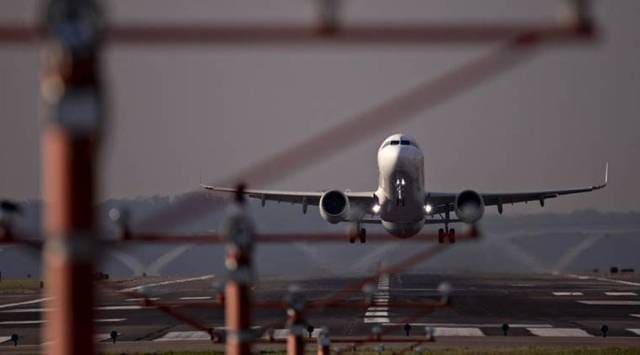Four ‘wildlife strikes’ daily in 2021; DGCA writes to AAI, pvt operators
A "wildlife strike" means an aircraft either suffered a bird hit or was disrupted by an animal on the runway during take-off or landing.
 The DGCA has asked airports to ensure regular garbage disposal in the operational area and to avoid water concentration and open drains. (Representational)
The DGCA has asked airports to ensure regular garbage disposal in the operational area and to avoid water concentration and open drains. (Representational)NEARLY FOUR “wildlife strike” incidents occurred every day near Indian airports last year, double from a little over two daily incidents in 2016, even as aircraft movement numbers for 2021 remained below the 2016 total, according to data sourced from the Directorate General of Civil Aviation (DGCA) and Airports Authority of India (AAI).
A “wildlife strike” means an aircraft either suffered a bird hit or was disrupted by an animal on the runway during take-off or landing. One landing or take-off is calculated as one aircraft movement.
Following two bird hit incidents on Sunday, which forced an IndiGo plane and a SpiceJet aircraft to turn back to their airports of origin, India’s aviation safety regulator has written to all airport operators, asking them to work on managing the threat of wildlife strikes to aircraft.
“We are all aware that during the monsoon season, wildlife (birds and animals) activity increases in and around airports. The presence of wildlife in the airport vicinity poses a serious threat to aircraft operational safety,” the DGCA noted in its letter to the AAI and private airport operators on Monday.
According to official data, there were 1,453 suspected and confirmed wildlife strike incidents in 2021, up from 839 in 2016. In comparison, the number of aircraft movements was 20.47 lakh in 2021, down from 22.89 lakh in 2016.
The top five airports which reported most wildlife strike incidents in 2021 were Delhi (231), Mumbai (140), Ahmedabad (71), Kolkata (70) and Kochi (56).
“All airports are requested to review their wildlife hazard management plan for any gap and ensure strict implementation of strategies for wildlife hazard management within and also outside the airfield,” the DGCA said in its letter.
On Sunday, an IndiGo A320neo aircraft’s left engine got damaged after suffering a bird hit when it was at an altitude of 1,600 feet after take-off from the Guwahati airport. The pilots declared an emergency and returned to the airport.
A Delhi-bound SpiceJet-operated Boeing 737-800 plane also had to make an emergency landing in Patna, minutes after take-off from there, after one of its engines suffered a bird hit.
The DGCA has asked the airports to ensure that within the airport premises, grass is trimmed and insecticide is sprayed, in addition to conducting frequent runway inspection for bird activities and deploying bird chasers and bird-scaring devices. It has also asked airports to ensure regular garbage disposal in the operational area and to avoid water concentration and open drains.
Airport operators have been asked to convene meetings of the Airport Environment Management Committee (AEMC) to discuss and review implementation of the measures to reduce bird hazard. “Frequent inspection by airport wildlife hazard management team/ AEMC to be carried out for identification of sources of wildlife attraction such as garbage dump, open disposal of abattoir/ butcheries waste, etc,” it has said.







- 01
- 02
- 03
- 04
- 05
























